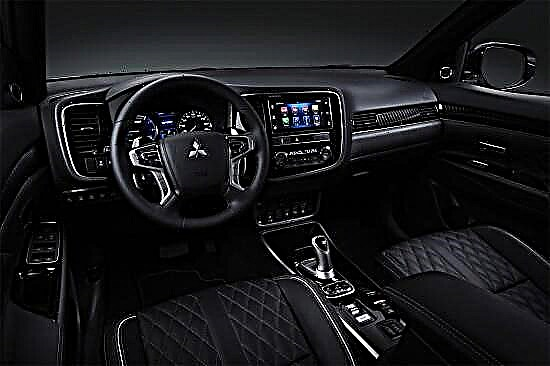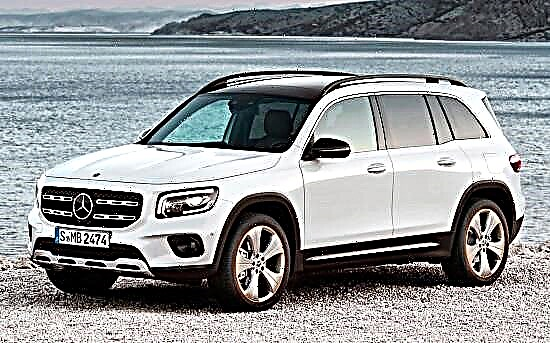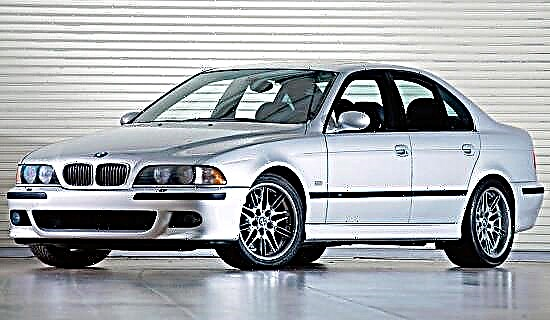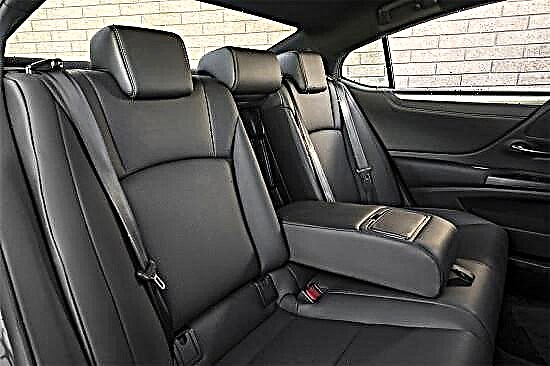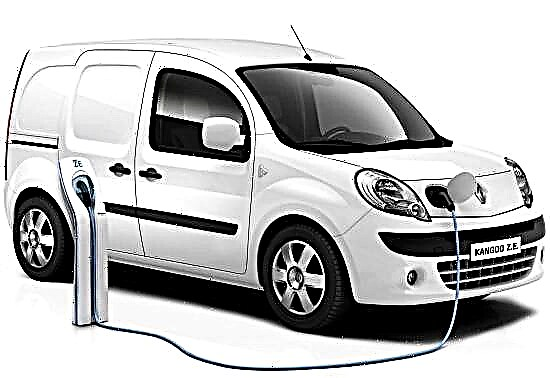In the fall of 2011, Renault presented to the international community an electric version of the second-generation Kangoo “heel” with the postscript “Z.E.”, after which it began selling it on the home market for itself.

In 2013, simultaneously with the "basic brother", the car was slightly updated, having received a retouched appearance and minor interior modifications, and in this form it is still produced.

Recognize Renault Kangoo Z.E. not so simple - the distinctive features of the electric car are the turquoise logo of the brand on the radiator grille, under which the charging slot is hidden, the emblem in the form of a leaf of wood with the letters "Z.E." and the absence of an exhaust pipe.
"Kangu" in electric version is offered with standard or extended wheelbase in van or minivan bodies. The Frenchman is 4213-4666 mm long, 1836-1844 mm high, 1829 mm wide, and 2679-3081 mm are allocated for the gap between the axes.

The difference in the interiors of the Kangoo Z.E. and an ordinary car is small - an electric car can only be identified by a differently designed instrument panel displaying information about energy reserves, and it is impossible to find other differences in design and ergonomics.
Depending on the version, the "heel" is able to accommodate from two to five people and take on board up to 650 kg of cargo in the luggage compartment with a volume of 3.0 to 4.6 cubic meters.
Specifications. Under the hood of the electric modification "Kangu" there is a synchronous electric motor of an alternating toga with a capacity of 60 horsepower (44 kW) with a twisting frequency of up to 10,500 rpm, the peak output of which reaches 226 Nm.
The car's transmission consists of a gearbox, direct drive and reverse inverter, and the power plant receives power from a lithium-ion battery with a capacity of 22 kW / h.
From place to first "hundred" Renault Kangoo Z.E. accelerates in 20.3 seconds, and at around 130 km / h its maximum capabilities are limited.
The "range" of an electric car on fully charged batteries according to the NEDC method is 170 km, and it takes 11 hours to replenish energy reserves from a regular household network (from monophase charging, the process fits into 7.5 hours).
The electric "Kangu" architecturally repeats its "base brother" - it has an independent front architecture of the MacPherson type and a semi-independent rear suspension.
The equipment of the car includes electric power steering and disc brakes on all wheels (supplemented by front ventilation) with ABS and EBD.
Options and prices. In Russia, the "electric heel" Renault Kangoo Z.E. in 2016, it was estimated in the amount of 2 289 000 rubles - this is how much dealers ask for a basic van with a carrying capacity of 625 kg. By default, it is equipped with one airbag, 15-inch steel wheels, MP3-radio, ABS, ESP, HSA, emergency braking assist technology, air conditioning, trip computer, heated front seats, electric settings and heated side mirrors and some other options.
For the Maxi modification with an increased distance between the axles, capable of taking on board 595 kg, you will have to pay from 2,359,000 rubles.
The passenger version of an electric car with a long base, five-seater decoration and a glazed body cannot be bought for less than 2,419,000 rubles, and its functionality (in addition to the aforementioned equipment) includes an additional diesel interior heater, air ducts for the second row of seats and heated rear window.
For a surcharge for the "Frenchman" available light and rain sensors, "cruise", an audio system with a CD-player, rear parking sensors, front passenger airbag, side airbags and other "gadgets".




